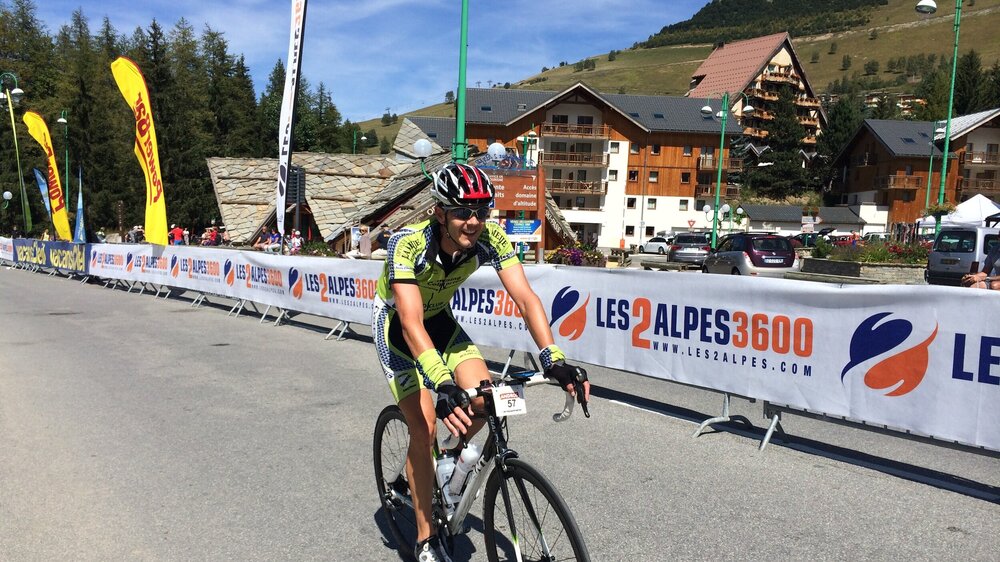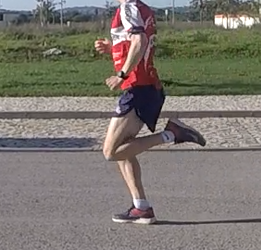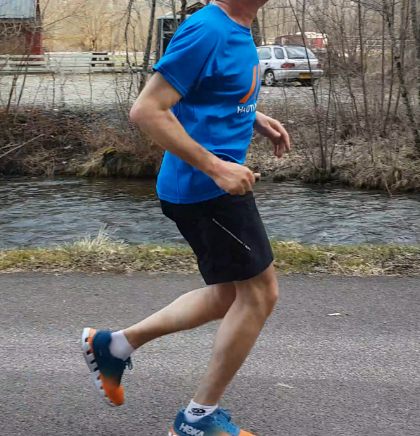Why you should work on your run ‘springiness.’
In this article, coach Kevin explores how we can use brains over brawn to run more efficiently. How does leg ‘springiness[‘ contribute to running efficiency, and can a springy shoe make a difference to your performance? Read on to find out more.
Triathlon is an endurance sport. This means it’s about the speed you can sustain (or endure!) long term rather than your maximum possible speed. At any time in a triathlon, you could go quicker (perhaps apart from a sprint finish) – it’s just probably not a good idea. So anything to make us better able to sustain a certain speed will make us faster over a fixed distance.
The structure of our bodies (on an elementary level) is split up into our skeleton, muscles, and tendons. Whilst our skeleton is essentially a fixed structure, both muscles and tendons are dynamic and will lengthen and contract as we run. Both can be considered as ‘springs’ – if we hold them in a fixed position and apply a load, they will lengthen. Their elastic modulus determines the amount they lengthen (basically, how stretchy they are). This study shows that the Achilles tendon is around half as ‘stretchy’ as the gastrocnemius calf muscle. You might think this means that the tendon isn’t as good at storing energy – however, it’s actually the opposite. Being less stretchy means that more energy from higher loads can be stored via a given extension (a big, stiff car suspension spring will hold much more energy by being stretched the same distance as a smaller trampoline spring). This is also why pre-running routines should include mobilisation and muscle activation, but generally not static stretching, which makes it easier to lengthen your muscles and tendons (unless you have an injury and have been specifically directed to do this).
When running, every time our foot hits the ground, a lot of energy is absorbed by our limbs. The more we can get back out again, the more efficient our running is, and potentially the faster we are.
So how do we ensure we make the best use of the spring effect from our muscles and tendons?
Firstly, we must ensure that the energy we can potentially store (from our foot impacting the ground) is actually going to our muscles and tendons. If you are an ‘overstrider’ – someone whose foot lands way in front of their centre of mass, you’ll likely be landing heel first and taking a lot of
that force up into your skeleton. A decent amount of that force will also go into the heel of your shoe and be dissipated – but if you are hoping that your fancy running shoes will do all the work for you and spring you forwards, then you are probably going to be somewhat disappointed. This study shows that the amount of energy you get back from shoe compression, while not zero, is small compared to that from your limbs. Admittedly running shoes have progressed since this study was published, and there are performance gains to be had by certain runners, but ultimately the main finding still holds – improving your legs is your best bet to running faster, not your shoes.
Over-striding – foot landing ahead of centre of mass
To better take that impact energy into your muscles and tendons, a foot landing and load closer towards or ideally under the centre of mass of your body is preferable. This way, less force is being directed into your skeleton (or the heel of your shoe) and more into muscles and tendons, as well as reducing the mechanical braking force effect of having your foot land in that forward-of-mass position.
Foot landing close to centre of mass
Another way you can maximise the potential for re-using the impact force is to minimise the amount of sag or compression in your running style.
A good analogy to think of here is a race car vs a conventional car. Race cars have extra structural bracing to minimise the chassis deflection, or changing shape under load, resulting in losses that will slow you down. In the same way, you should avoid dropping down into your stride (instead, think ‘run tall’) and keep your hips up and forward, like a well-braced race car. To get into this in a little more detail, consider that the more you ‘run tall’, the lower the angles of flexion, and the fewer changes in muscle length you experience. While we are storing energy in our muscles and tendons, it is theorised that the overall energy cost of running can be reduced if we rely less on muscle length changes and more on tendon stretch. This is also supported by the observation that running economy increases with a reduction in ground contact time and a reduction in vertical oscillation.
Lastly, you’ll want to make the best use of this stored energy by releasing it in the correct way. Running speed is measured by your forward velocity, and any energy spent moving you up and down is effectively wasted (of course, you have to maintain some vertical movement; otherwise, we’d all be tripping up over our feet!) Think about extending your leg a little further on the ground behind you and driving from the ball of your foot and toes. This way, you can release the energy stored in your Achilles tendon and calf (where the majority of spring energy in the limb is stored) in an appropriate direction – behind you – to create more forward motion and therefore run speed.
Sometimes trying to get your head around the details of changes to technique can be a little overwhelming to think about and can be better brought together and focused on by instead using ‘cues’ – like the ‘running tall’ thought. Imagining your legs as springs, and trying to keep each stride as tightly coiled, with each contact as short (in duration) and springy as possible, can help bring it all together and really give us the best chance to increase our running efficiency.

Kevin opened a B&B for cyclists in France in 2014, & then a year later decided to start a cycle coaching (level 3) qualification. This was mainly in order to be able to better support his guests (but also to make his own training more effective too). At the B&B he runs the odd training camp for cyclists but mainly offers coaching advice while guiding guests. An engineer by background, he happy diving into all sorts of training data, but also understanding that coaching is about much more than just the numbers!
After being introduced to triathlon by a good friend & then taking part in races for a couple of years he decided that a level 2 coaching course with British Triathlon was the way forward, completing this in 2019.
Visit Kevin's
Coach profile
We’re here to help
Tri Training Harder are one of the leading Triathlon coaching providers in the UK, using our wealth of experience to unite scientific and technological research with already well-established and successful best practices, to create a formula for triathlon and endurance coaching that works.
The result is an honest, dynamic, yet simple new way of constructing an athlete’s training to allow them to reach their potential.
If you’re planning your next season, just starting out in the sport or are looking for extra guidance at the very top end of the field, we are here to help, and our coaches would be delighted to hear from you. You can contact us via the website, and one of the team will be in touch.





